I've got an old pistol that I've had for many years. I know nothing of its history or anything about it. I know it won't work since there are some parts missing for the trigger and the wood bit is about gone, but it still looks good hanging on my wall. Im wondering if anyone here may know something about it, or can lead me in the direction of some info.
Now for some pictures.
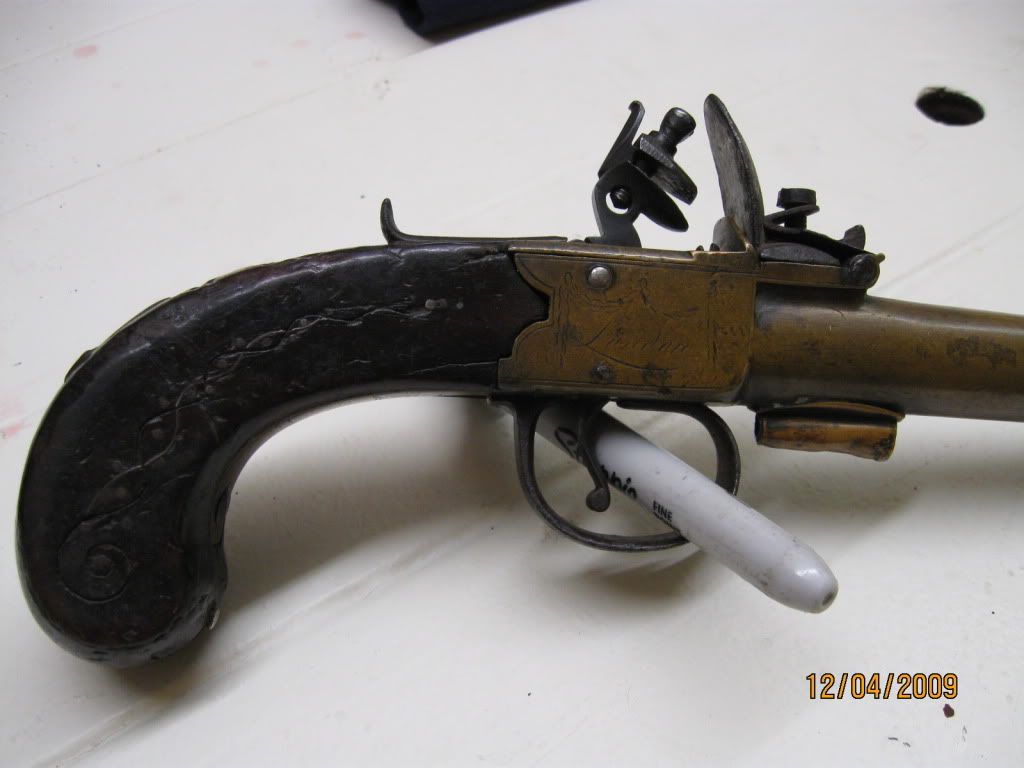
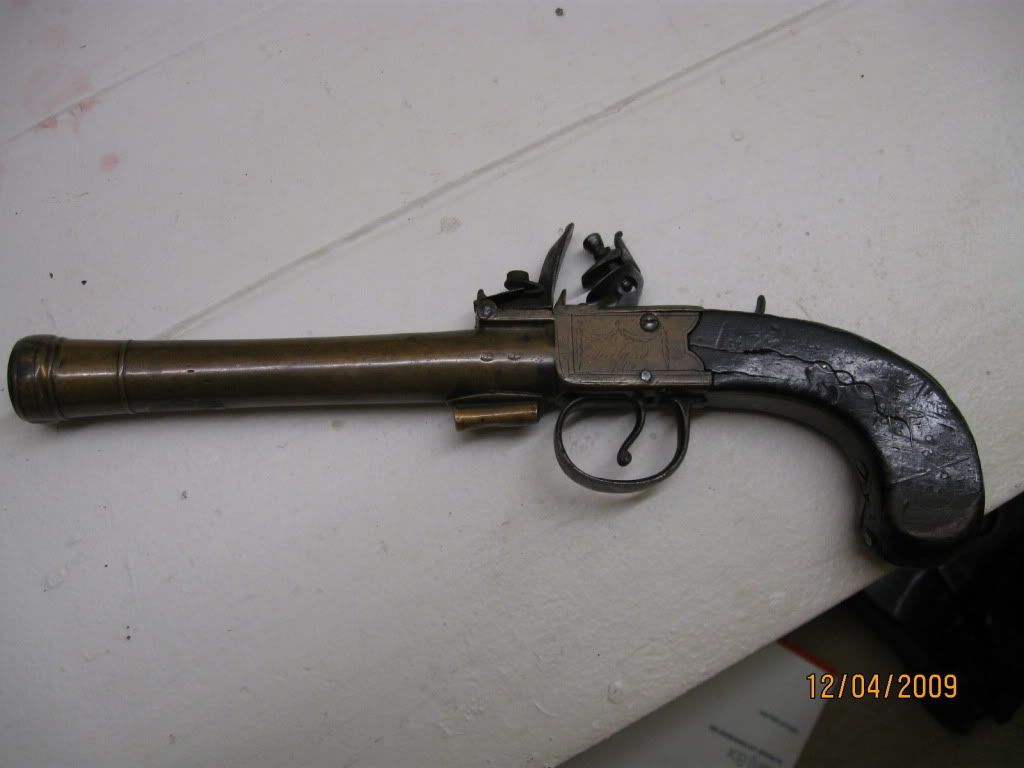
Says London on this side.
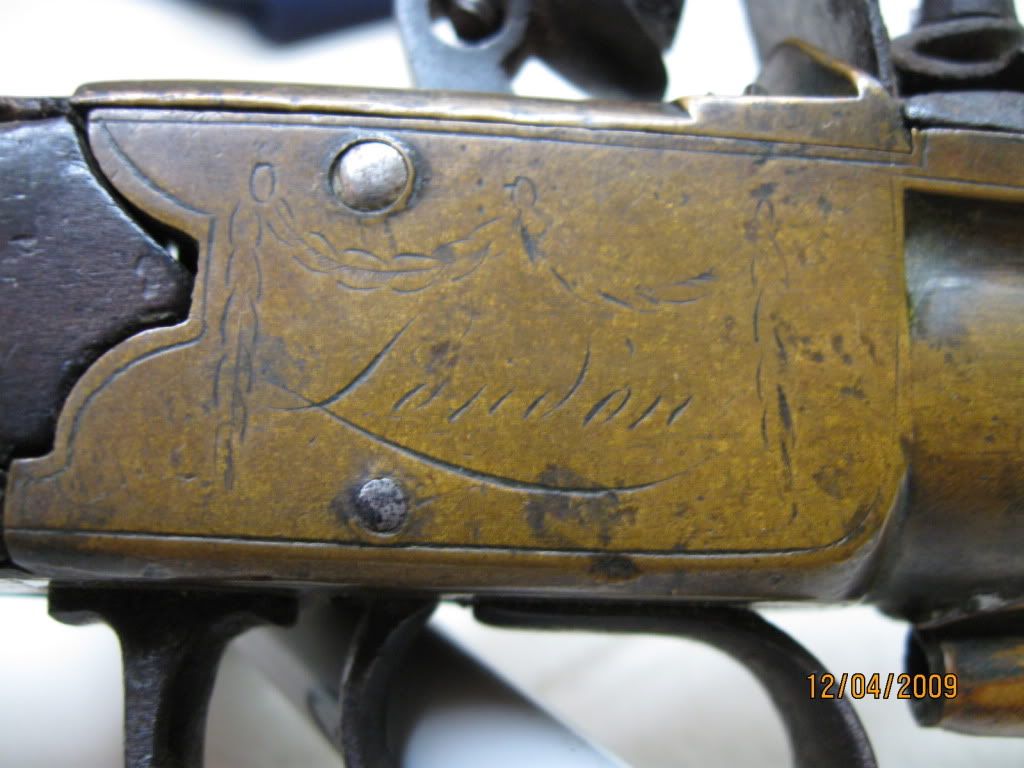
I'm not sure what it says on this side.
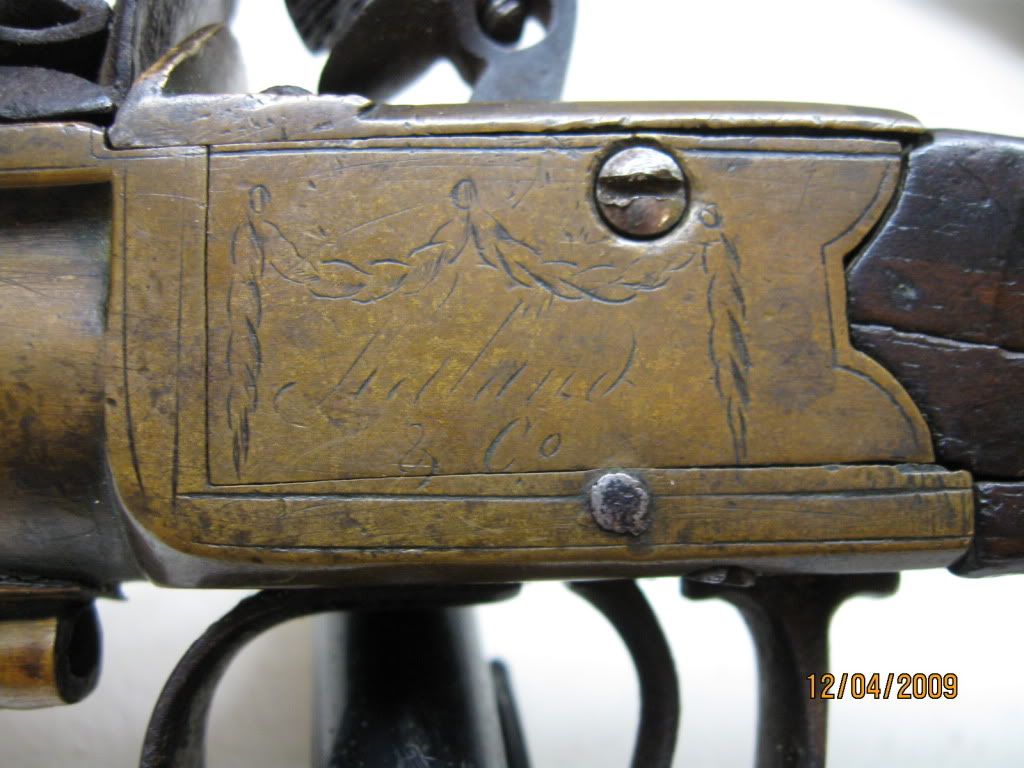
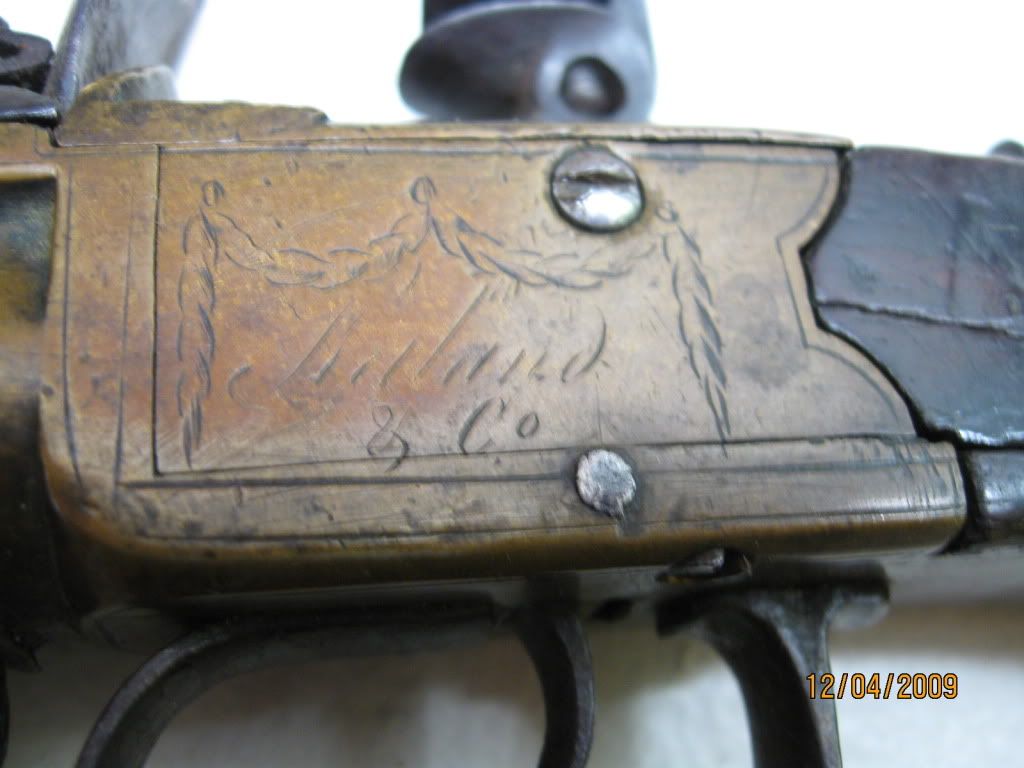
Heres the hammer area.
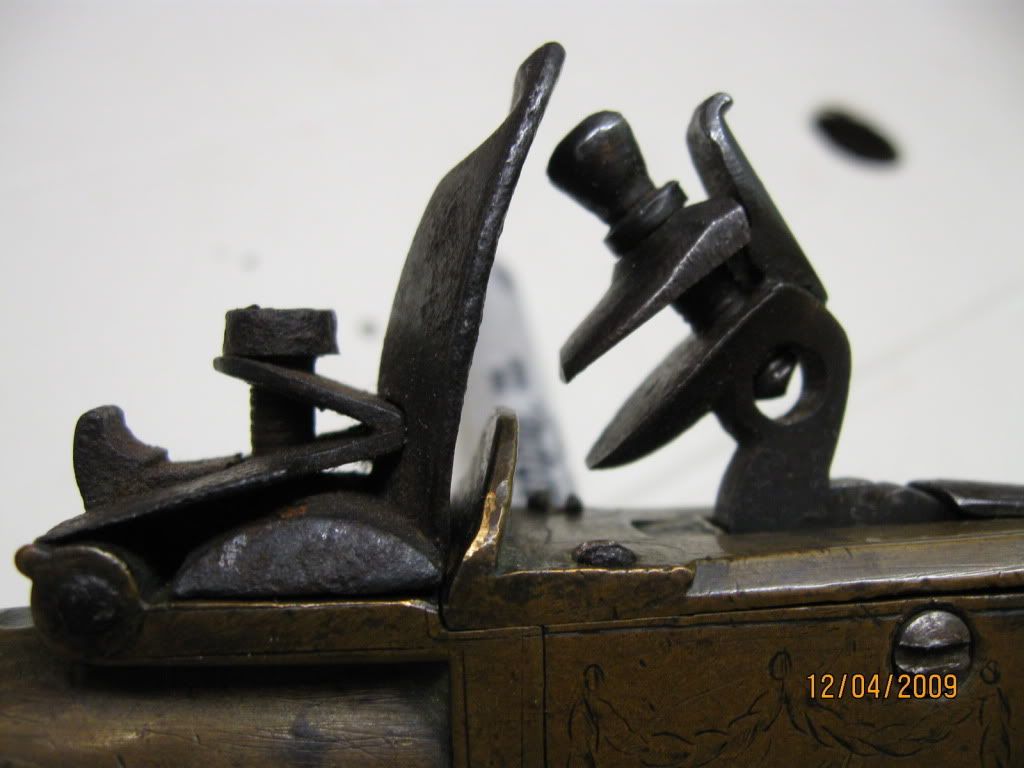
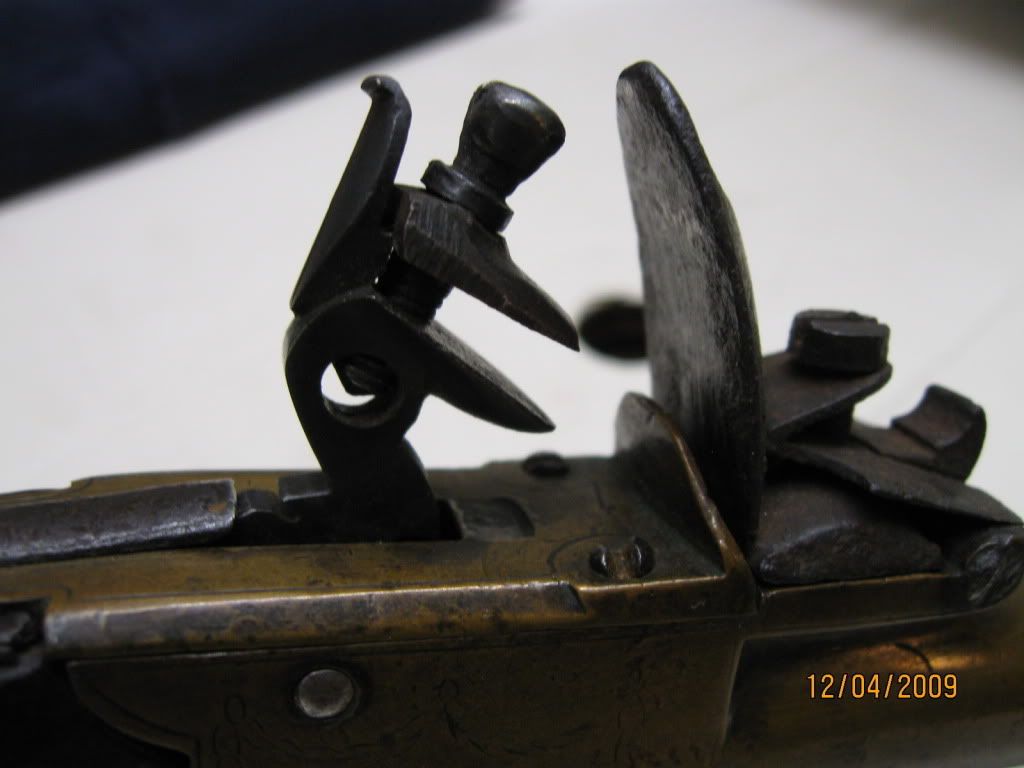
Its got a flower looking stamp on the bottom of the trigger guard.
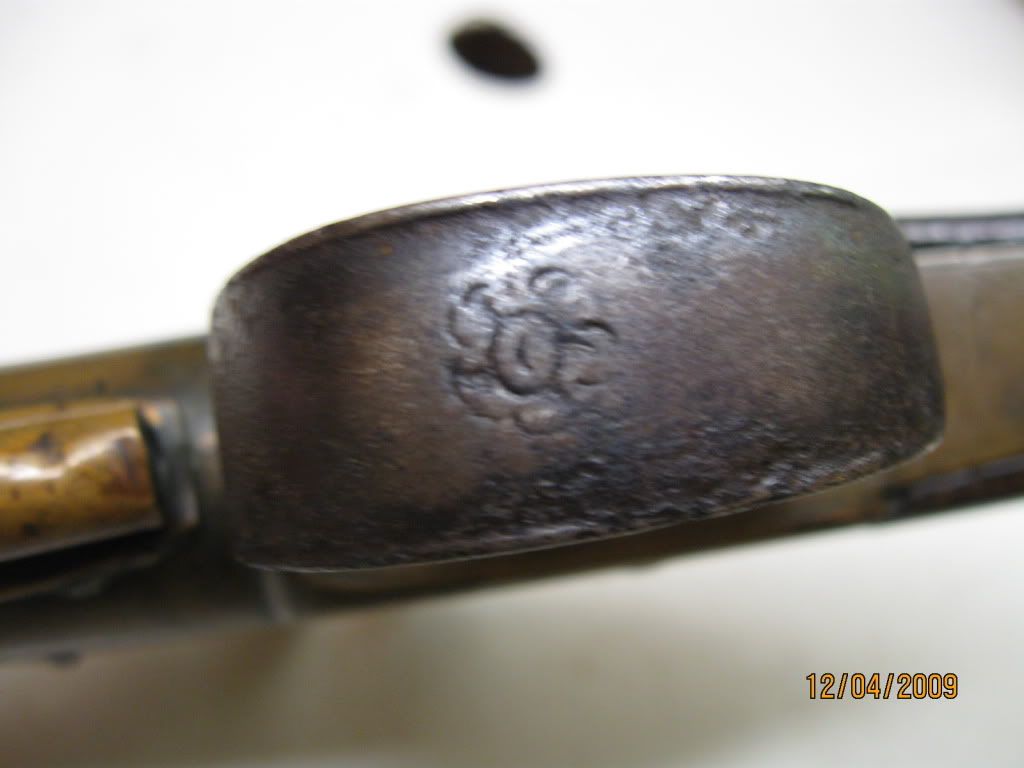
Now for some pictures.


Says London on this side.

I'm not sure what it says on this side.


Heres the hammer area.


Its got a flower looking stamp on the bottom of the trigger guard.






